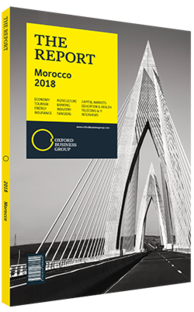Ali Harraj, President, Wafa Assurance: Interview

Interview: Ali Harraj
How do you evaluate the performance of the Moroccan insurance sector in 2016?
ALI HARRAJ: The performance was extraordinary that year. There was an overall growth in the country’s Dh35bn (€3.2bn) insurance market of around 15.5%, which is one of the highest growth rates for the sector in the last 10 years. Compared to an overall GDP growth rate of 1.2% in 2016, no sector of the Moroccan economy evolved at such a rapid pace. This subsequently led to a considerable increase in insurance penetration in the economy. Insurance is a highly dynamic sector and its performance was boosted notably by life and savings insurance. Wafa Assurance, for instance, grew by more than 14% last year, posting a growth rate of 18% in life and savings insurance, and around 9.5% in non-life insurance.
Life and savings insurance has shown steady growth in recent years, and now accounts for about 40% of the market, compared to 60% for non-life products, including assistance insurance. Non-life still dominates the sector and is valued at more than Dh20bn ($1.9bn) – half of which is motor insurance. Life and savings insurance growth is dependent on the appetite of individuals looking for long-term savings, such as education or retirement plans. It also depends on the relative attractiveness of returns on savings products and the decrease of returns on term deposits, given the abundant liquidity in the banking system.
What opportunities do you see for the takaful (Islamic insurance) segment in the country?
HARRAJ: Islamic insurance has worked well in many countries, such as Indonesia, Malaysia and Saudi Arabia, while it has not really developed in others, so only time will tell just how successful it will be. In markets where Islamic insurance is well developed alongside conventional insurance, takaful represents between 10% and 20% of the global insurance market, for example, it is 16% in the UAE and 15% in Malaysia. In Morocco, there is certainly room for Islamic insurance, but it is difficult to predict precisely what share of the overall insurance market it will represent. The market does not exist yet as Law No. 59-13 has just been passed and the application regulations for takaful, which will clarify the perimeter in terms of customer and product segments, have not yet been finalised. However, it is expected that a sophisticated Islamic financial services sector will be launched by 2018, with licensed Islamic banks starting their operations. The development of a full Islamic finance ecosystem – banks, insurance and capital markets – will be critical to allow for the take-off of this sector.
What regional markets offer the best opportunities for Moroccan insurers?
HARRAJ: French-speaking West Africa offers good insurance prospects, with many of these countries growing by 7-10% per year. The majority of banks and insurance companies have significantly expanded operations in the region, so Moroccan financial services players are, to some extent, well integrated there.
Generally, African insurance markets are poised for strong, long-term growth. This is driven on the one hand by economic catch-up, with a number of investment projects in areas like infrastructure, roads, telecommunications and developing the middle class; and on the other hand by the increase in insurance penetration, which is still very low, at 1% or less for many African countries. With that said, Africa is a set of very heterogeneous countries in terms of economy size and structure, and most notably as regards dependence on raw materials, business climate, culture and language, and political and security situations.
There is also broad diversity in terms of insurance market size, profitability, level of fragmentation and competition in the market, so each insurer will have its own strategy and set of investment criteria to determine which markets represent the best fit for them.
You have reached the limit of premium articles you can view for free.
Choose from the options below to purchase print or digital editions of our Reports. You can also purchase a website subscription giving you unlimited access to all of our Reports online for 12 months.
If you have already purchased this Report or have a website subscription, please login to continue.

